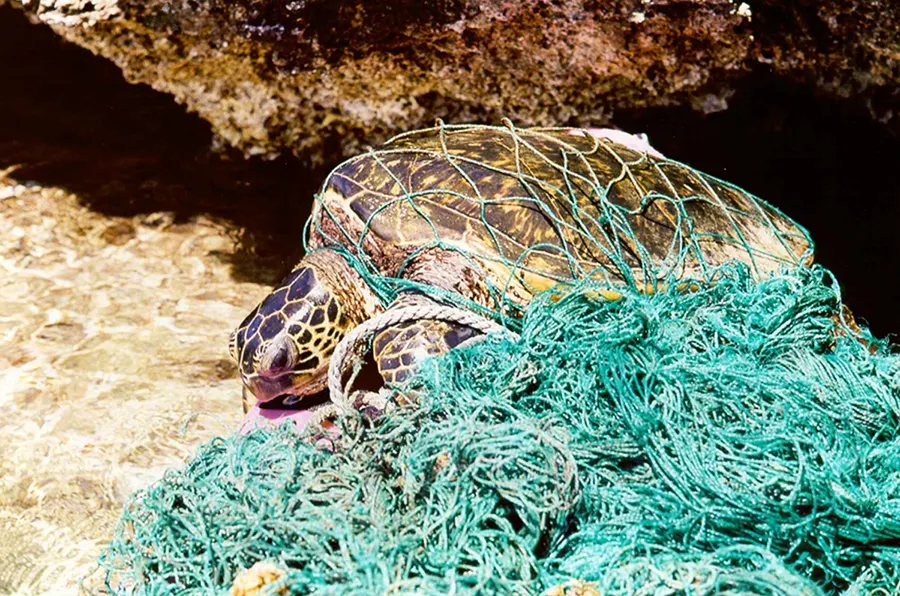Physical Address
1 Riverwood Drive
Moncks Corner, SC 29461
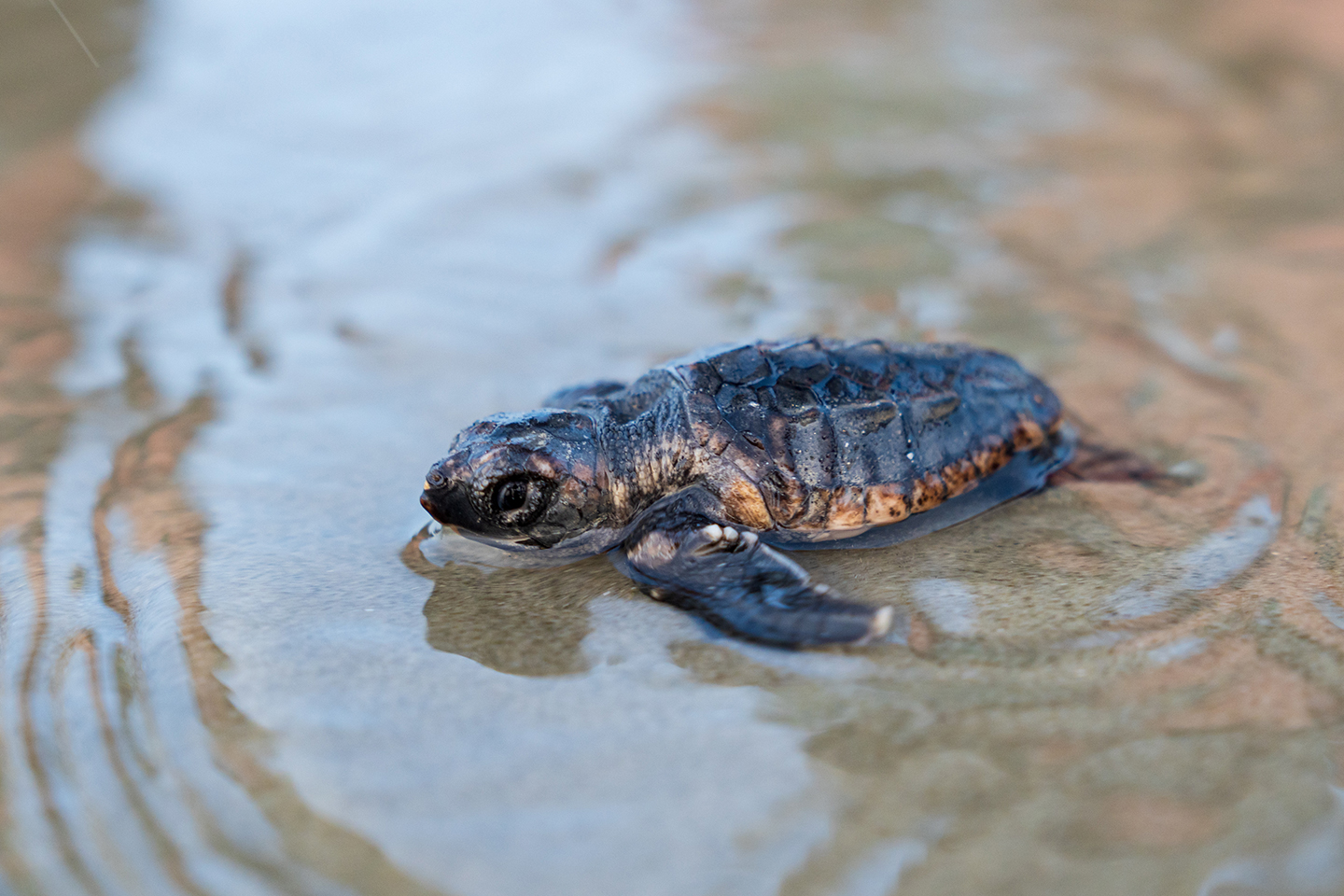
The loggerhead sea turtle is the South Carolina state reptile and the one most often spotted on our shores. It’s been on the endangered species list since 1978. Its first predators were large sharks; now, its greatest danger is manmade.


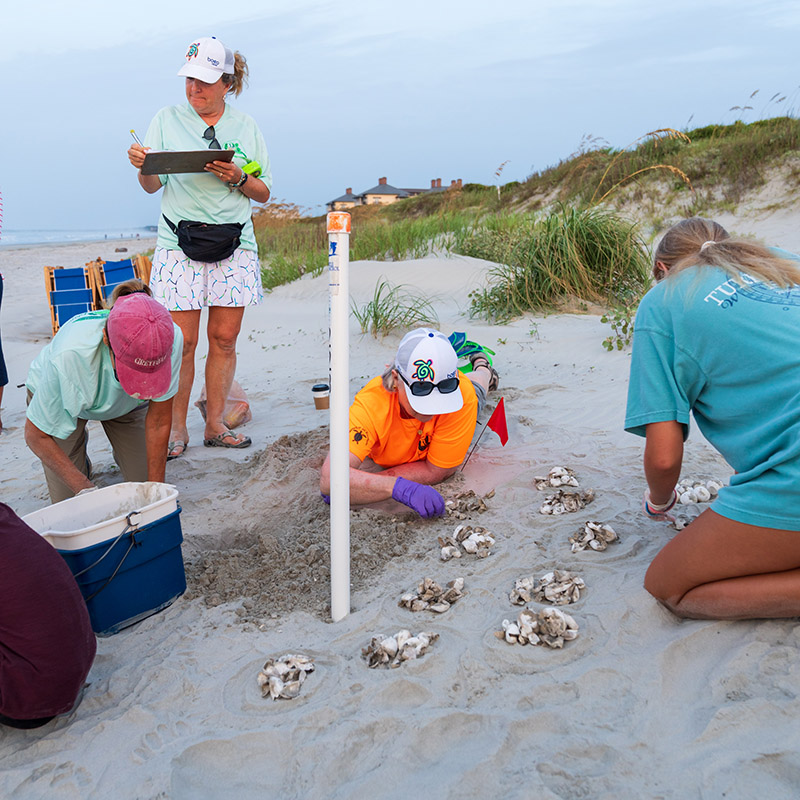
“Pollution, in general, is the biggest threat,” said Stacia White, Director of Husbandry at Ripley’s Aquarium of Myrtle Beach.
World Wildlife Fund says 52% of the world’s turtles have eaten plastic waste and that loggerheads eat 17% of the plastic they see. Abandoned fishing nets can catch turtles and drown them or prevent them from hunting. Baby sea turtles are most at risk because of the plastic that remains on nesting beaches.
“Every age range of sea turtles can be affected by plastic. A nesting sea turtle can pick up a six-pack ring when they’re walking back from hatching,” said White. “Then they’re more susceptible to predators because they can’t swim as well. Plastics can be obstacles for hatchlings trying to make it to sea.”
Turtles that have swallowed plastic along Grand Strand and Lowcountry beaches sometimes end up at the South Carolina Aquarium in Charleston, which is home to field trips, families and fish enthusiasts who can see the turtle rehabilitation center firsthand.

The sea turtle named Goat, for example, was found lethargic and underweight on Folly Beach in April. After it was brought to the rehabilitation center at the South Carolina Aquarium, it took the turtle four weeks to defecate. When it did, the feces were full of plastic. With rehab and a team of turtle experts looking after it, Goat was doing much better as of June.
According to the South Carolina Aquarium website, “Sea turtles arrive at the Care Center suffering from a variety of ailments, including debilitated turtle syndrome, predation and boat strike wounds, injuries from accidental interactions with fishing gear, and even exposure to dangerously low temperatures. Our staff veterinarians diagnose each turtle and work with Care Center staff and volunteers to provide treatments and rehabilitative care. Patients are given IV fluids, antibiotics, vitamins and other medications. Based on the sea turtle’s condition, a variety of procedures may be performed, such as X-rays, CT scans or ultrasounds. Rehabilitated sea turtles are released home in hopes that they will become reproductive members of the sea turtle population.”
Turtles often mistake plastic for food, which oftentimes leads to death. If they escape consuming plastic—or death due to plastic consumption—plastic may find a way to sneak into their systems and wreak havoc. For example, plastic can end up in turtles’ digestive tracts after they eat fish that have eaten plastic themselves. And the plastic problem is only getting worse. Plastic pollution has been doubling every six years, according to a story in the Washington Post, which also reported that more than 170 million pieces of plastic currently litter our oceans. By 2050, it’s estimated there will be more plastic than fish in the sea when it comes to weight.
“The groups that are picking up ocean trash can’t keep up,” said White. “I don’t think it’ll get better until we at least cut down on the amount of plastics that end up in the ocean.”
Santee Cooper volunteers joined Sustain Coastal from Coastal Carolina University and SkyWheel Myrtle Beach for a beach cleanup on World Ocean Day. It was eye-opening to many to see what people left as litter on the beach.
A couple dozen volunteers during fewer than two hours found:
18 plastic bags
15 plastic bottles
60 plastic caps and lids
187 plastic food wrappers/film
32 plastic fragments (rigid)
96 plastic straws
26 plastic straw wrappers
45 Styrofoam items
7 plastic toys
49 plastic utensils, cups, plates
74 other plastic items
2 fishing lines and nets
10 glass bottles/fragments
779 cigarettes and filters

These are the same sands where loggerhead turtles nest. Female sea turtles are remarkable creatures in that they usually return to where they hatched decades earlier. They lay nests of an average of 100 eggs. About two months later, the hatchlings emerge from their nests and use the light of the moon on the horizon to find the direction to the ocean. For those living or staying on beach, it’s important to turn out or shield house lights so the turtles don’t confuse them with moonlight.

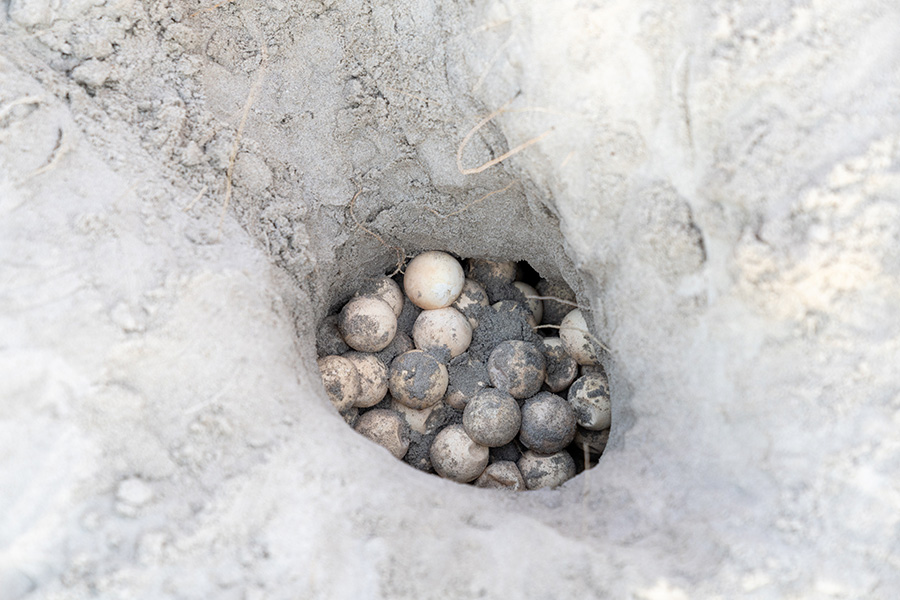
“Baby hatchlings use the moon’s reflection off the waves to locate the water,” said Rick Scott, head of S.C.U.T.E., South Carolina United Turtle Enthusiasts, which is based on the Grand Strand. “Turtles only see blue and green light, which is produced by these moonlight reflections. If the homeowner leaves on their lights and the hatchlings come out looking for light, they will inadvertently crawl to the house lights, get lost in grass, be eaten by crabs, etc.”
Since 1990, Santee Cooper has worked with S.C.U.T.E. to bring awareness of how keeping our beaches dark, or at least dim, helps hatchlings find the horizon so they can reach the sea and thrive.
S.C.U.T.E. is responsible for 13 beaches in Horry and Georgetown counties and manages nests under permits issued by the South Carolina Department of Natural Resources (SCDNR). (A scute is the hardened plate on a turtle’s shell, making S.C.U.T.E an appropriate name for the group.) If a nest is below the high-tide line, S.C.U.T.E. volunteers have the authority to move it to safety. The group also tracks and monitors nests along the Grand Strand.
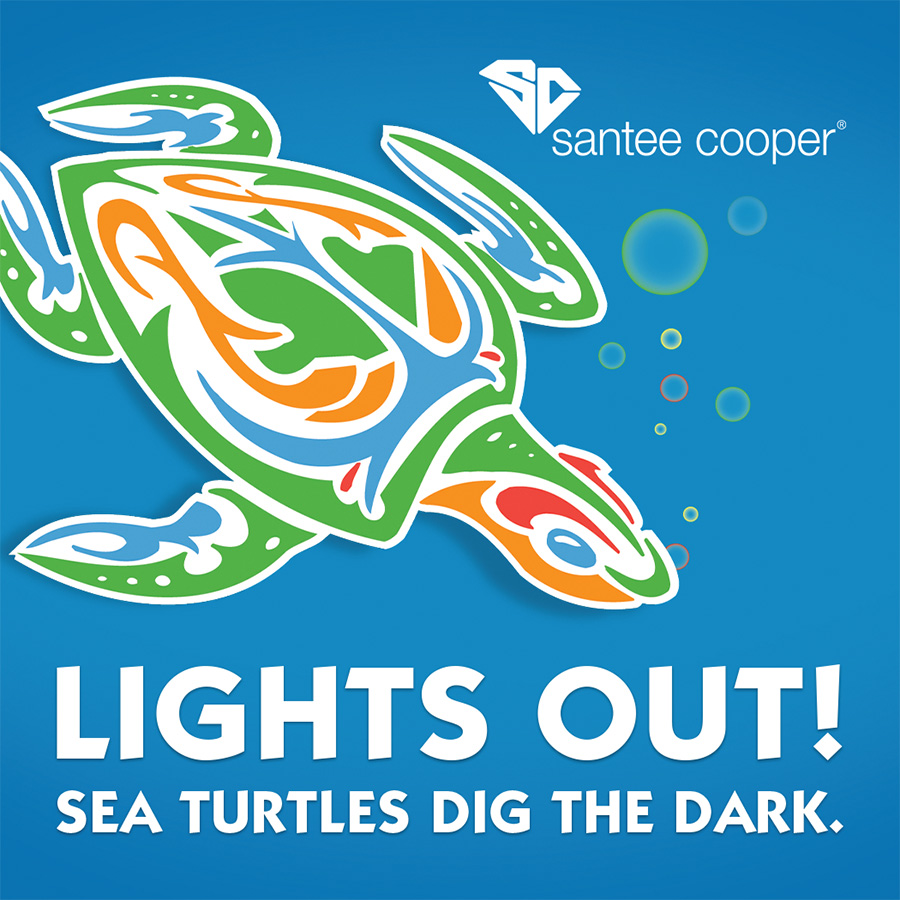
Because of groups like S.C.U.T.E., South Carolina has seen an increase in the number of sea turtles in the past few years, although 2023 was an exception.
“It’s a little lower this year than years past,” said Scott. “This could be due to an abnormally cold May, food supply or currents.”
“Of 100, probably 10, 15, 20 don’t make it. That may not be all because of plastics, but a lot of it,” said White.
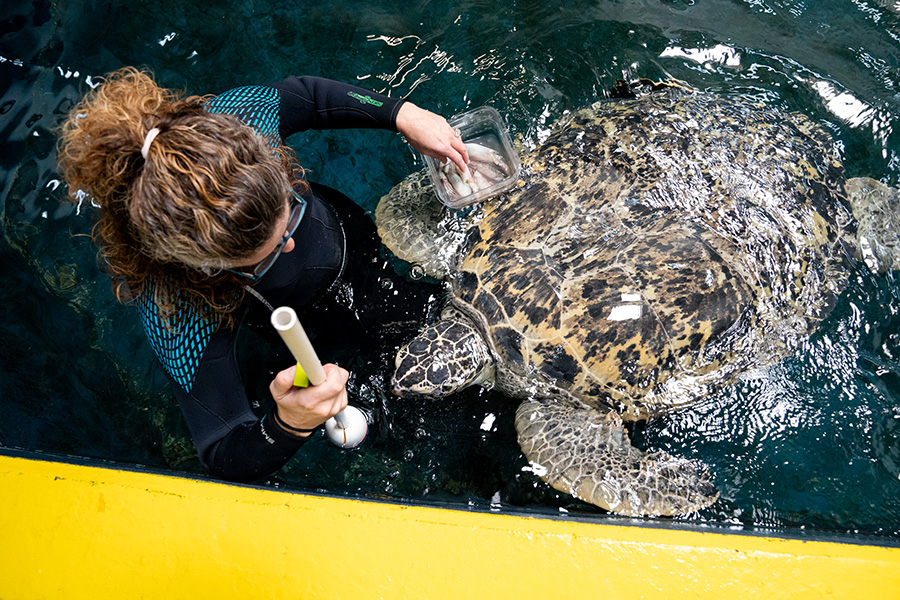
Ripley’s Aquarium in Myrtle Beach will sometimes take injured turtles when the South Carolina Aquarium is at capacity. Year-round, Ripley’s is home to Gabby, the 61-year-old, 300-pound green sea turtle.
“This is Gabby’s world,” said White. “The sharks just live in it.”
White has been taking care of Gabby since 1999. Gabby likes to taunt the sharks a bit, but they’ve been in this tank together for 20 years, so they’re more like family. Gabby, however, is definitely the star of the aquarium.
Along the Grand Strand, S.C.U.T.E. reported 153 nests in 2023. In those nests, 15,757 eggs were laid, with 12,365 hatchlings that made it to the ocean.
“Loggerhead turtles have been around for many years, but climate change will definitely impact the loggerhead,” said Scott. “We have a saying, ‘hot chicks, cool dudes.’ This refers to the fact that the sex of the turtle is determined after the eggs are laid. Warm temps create female turtles, and cooler eggs at the bottom of the chamber result in male turtles. That may sound good from a reproductive point of view, but if male turtles become more and more rare, the species could be even more threatened.”
Flipping the Tide: Join the Fight to Keep Sea Turtles Afloat
“It doesn’t take a huge change to make a difference,” said White. “Not using plastic straws or plastic bags. Balloons in the ocean are another big problem. If everyone does a little, it ends up making a huge difference.”
If you find a sick or injured sea turtle, please call the South Carolina Department of Natural Resources hotline at 800-922-5431.
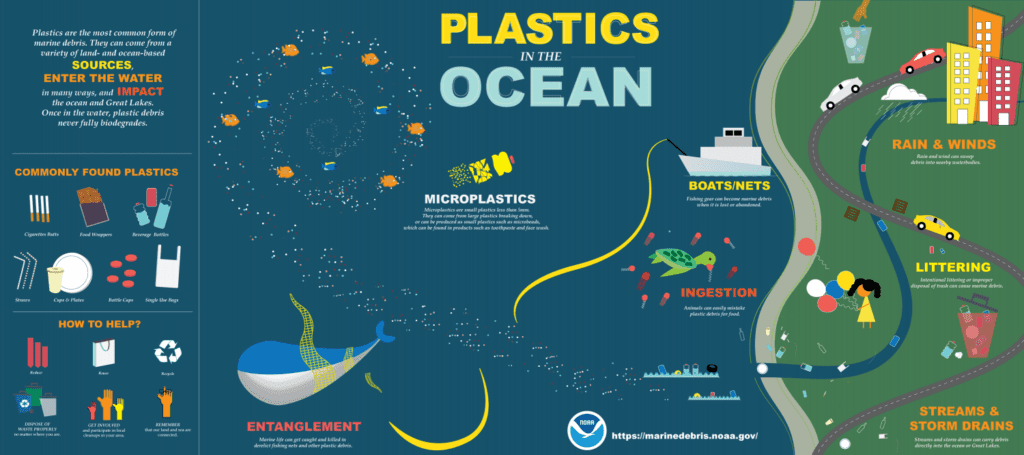
Reduce marine debris and participate in coastal cleanup events. Responsibly dispose of fishing line. Lost or discarded fishing line kills hundreds of sea turtles and other animals every year. Trash in the environment can end up in the ocean and harm marine life.
Reduce plastic use to keep our beaches and oceans clean. Carry reusable water bottles and shopping bags. Learn more about plastics in the ocean here.
Refrain from releasing balloons. They can end up in the ocean where sea turtles can mistake them for prey like jellyfish or become entangled in strings or ribbons.
Learn more about marine debris.
Admire sea turtles from a respectful distance by land or sea and follow these guidelines:
Learn more about our marine life viewing guidelines.
Beaches are paramount for healthy sea turtle populations since females come to the shore to deposit their eggs into nests.
If you see a stranded, injured or entangled sea turtle, contact professional responders and scientists who can take appropriate action. Numerous organizations around the country are trained and ready to respond.
Learn who you should contact when you encounter a stranded or injured marine animal.
